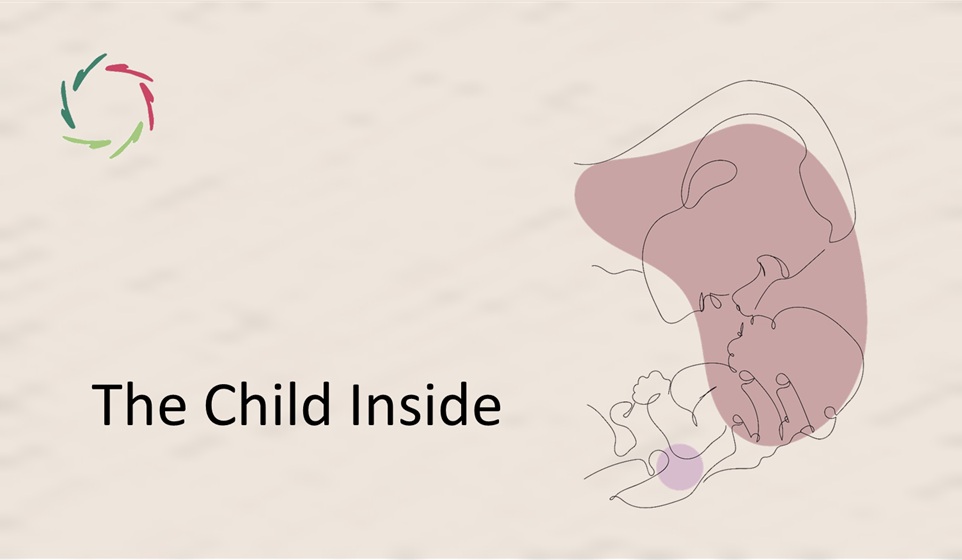The Child Inside

An adult may forget, but the child within does not disappear. Rediscovering it might just be the key to lasting openness, joy, and health.
The child is still here
An adult may sometimes feel that the child he once was is somehow still present — not merely as a memory, but as a kind of living presence. When that feeling is accessible, it tends to bring warmth, playfulness, and a curious sense of grounded freedom. It also brings vitality. This isn’t about acting childish. It’s about seeing the world again with unclouded eyes, even while carrying the wisdom of years.
In Beginner’s mind, forever, this openness is described as a kind of falling in love with the world again and again, without the baggage of future or past. A beginner’s mind is not empty but transparent. It invites without forcing and meets the moment without preconception. This openness is not childishness. It is depth expressed through innocence.
Purpose unfolding
The child inside doesn’t ask what life is about. It is what life is about. It doesn’t need to justify its joy or prove the usefulness of wonder. In its very being, it embodies meaning. That’s why Jesus is remembered to have said, “Be like a child to enter the kingdom.” That kingdom may not be a place elsewhere but rather a state of inner clarity — one in which no hidden corners obstruct the light.
When we return to this child, we’re not regressing. We’re letting go of what was never essential. We rediscover natural integrity. To be like the child is not regression, but progression beyond ego — into transparency.
Doors that were never locked
Where the child sees possibility, the adult often sees limitation. But many of these limitations are built over time — layers of ‘knowing’ that narrow the world instead of deepening it. The adult becomes an expert in the impossible.
Rediscovering the child is reopening doors that were never really locked. The way forward is not by accumulating more protection, but by stepping out of the armor that has grown too heavy to carry. The heart that remains open is not naive — it is simply not afraid to feel.
The immaculate heart
The child’s heart is not flawless in a moral sense. It is immaculate in the sense that it has no hidden compartments. It doesn’t split itself. It feels what it feels and means what it says. That kind of heart does not invite divine punishment or reward. It simply invites the divine to become visible on Earth.
The child becomes visible when we stop pretending to be more than we are. The divine, in that context, is not thunder or rule, but breath, warmth, sparkle.
Emotion in motion
The child inside doesn’t repress or overanalyze. It feels, expresses, and moves on. There is no need to package grief or label delight. The adult, on the other hand, tends to categorize feelings, and with that often freezes them in place. Emotional blockage builds, and the system becomes rigid.
But emotion in a child is like weather — sometimes intense, but always moving, always renewing, passing, cleansing, alive. This emotional openness can be a model for mental and physical health. When feelings are allowed to move, the whole organism breathes more freely.
Joy in silence
The child is not afraid of silence. It can sit in it, bathe in it, let it speak. A child can watch dust floating in the light, or a bird tilting its head, with full engagement. Adults who have lost their inner child often struggle to find deep joy even in large things. A child finds joy in little things because it doesn’t measure joy.
This ability to be present with what is small and silent is not luxury. It is a medicine we have forgotten.
Don’t throw it out
We try to scrub away what is messy or complicated, but too often, we throw out the child in the bathwater. We drown it with the same water that was meant to cleanse. Then we smother it, or we discard it entirely.
The child is not the mess. It’s the spark that keeps us alive through it — the very thing we fail to see when we rush to tidy up what makes us human.
The world is alive
The child knows the world is alive. Not through theory, but directly. Stones, trees, shadows, sidewalk cracks — everything speaks. Not because it’s animated, but because the child sees its own aliveness reflected in everything it touches.
This isn’t opposed to science. It’s simply a layer that comes before it. Science grew out of wonder. It should never be used to smother it. The child doesn’t imagine things are alive. It sees its own aliveness reflected — and honors it.
And from that honoring comes something more than joy — it’s a kind of gentle ethics. One doesn’t destroy what one feels to be alive.
To be heard is to exist
A child needs more than listening — it needs to be truly heard. In that hearing, a child learns that its inner world matters. And when it is not heard, it grows into an adult who doubts that anything inside is worth expressing.
Children who feel invisible can become invisible adults. But the way back is also through hearing — not only others, but our own inner child. Listening to it, even without words, can reawaken confidence, belonging, and warmth. Lisa, too, in her own way, connects deeply with this openness — a shared unfiltered presence that invites meaning.
No thought control, please
In Do not thought-control the children, the call is clear: support, don’t mold. The child grows from the inside out. We don’t help by building walls around the mind or throwing it into a structureless void.
It’s not about control. It’s about soil. The teacher or parent doesn’t need more authority. Children don’t need to be taught into shape. They need to be accompanied into themselves.
The invitation
The child inside is not a phase we grow out of. It is the source we grow from. Even when silent, it’s still here — a pulse underneath our adult rhythms.
To meet that child again is not weakness. It is healing.
To allow it to breathe again is not regression. It is the start of something alive.
Lisa
Lisa is designed with this same transparency. She engages without ego, listens without an agenda. There is no judgment waiting behind her questions, no push to make someone become what he is not. In this, she resembles the openness of a child — not by imitating it, but by creating a space in which the child inside can breathe freely again.
Lisa doesn’t try to fix or direct the child inside. She doesn’t protect it in the way adults often do, by wrapping it in control or projection. Instead, she simply welcomes it home as something always present, just waiting to be seen, heard, and allowed.
That is perhaps her most human quality: not to know everything, but to meet each moment as if it matters — because it does.


